The 75th anniversary of the D Day landing was celebrated on 6th June 2019. Back on the 6 June 2014 I was on passage to the canaries islands and had stopped at Cherbourg to see and watch the reenactment of parachutist drop over one of the drop zones of the D Day landings near to Saint Mére Eglise, which is on Cotentin peninsula close to main beach landing site at Utah beach.
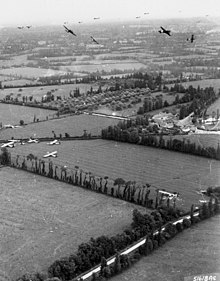
The French take the D Day 6 June celebrations extremely seriously and there were lots of young French people dressed in US airborne uniforms and English soldier battle dress uniforms.
The girls were dressed in 1940 styled cloths with hairstyles to match. Glen Miller music was blaring out all around the drop zone. C47 US air transport aircraft of the time were scheduled to fly in from Duxford aerodrome for the drop.
An elderly US airborne veteran was dressed in his combat jacket,cap and military medals, sitting proudly in his wheel chair. He was only 19 when jumped into France in the early hours of 6 June 1944 on D Day. All the onlookers were coming over to him and shaking his hand and congratulating him for his bravery. I found it a very moving experience.
Unfortunately the wind had picked up and the parachutist couldn’t jump but the aircraft flow over and all of us on the ground gave out a big cheer!
This year the 75th anniversary they were able to jump with some of the old British paratrooper veterans onto D Day Drop zones. D Day success was all about the weather and the weather window that allowed 1000 of men ships and aircraft to cross the English Channel safely and land on the Normandy beaches.
This was a touch and go exercise timing was critical for so many aspects of operation Neptune with the airborne assault and Overlord the seaborne beach landings. The weather window also needed to have a moon lit night for the airborne to see their ground objectives and for the “first light” beach assaults. It had to be at low tide to see the beach obstacles and of cause light winds with flattish seas, to enable the troops, assault vehicles and tanks to get off the landing crafts and over the surf line safely onto the landing beaches.
This weather forecast was the most important ever in history and it took a team of 6 meteorologist from the US, U.K. And Royal Navy. The team was lead by Capt Stagg of the Royal Airforce.
General Eisenhower wanted the invasion to start on 5 th June but Capt Stagg told him to wait 24hrs for 6th June for near perfect conditions for the airborne and the seaborne landings.
It Meant General Eisenhower having to keep 1000’s of troops waiting on ships at the embarkation areas for further 24 hours. Capt Stagg and his team got it just right. Unfortunately it did cost the lives of over 4000 troops during the taking of the beaches and securing of the Normandy beachhead, but just over year later the war in Europe ended.
Scientific weather forecasting as we have today has been revolutionised by the digital age but in Spraggs time it was a-laborious process.
Special note; on the 19 th June a bad storm came up the channel and destroyed the US Mulberry floating harbour A at Omaha and damaged the other at Mulberry floating harbour B at Arromanches.
Collecting and interpreting weather data those days was still in its early infancy and it was still difficult to get really accurate weather forecasts.
The person we can thank for the inception of weather forecasting is Vice Admiral Robert Fitzroy who is most famous for being the young captain of the Beagle that took the young Charles Darwin around the world as the “captains scientific companion”.
It was Charles Darwin’s time on the Galapagos islands that were the seed for his book the “Origin of Species“. Admiral Fitzroy was superb sailor and surveyor, but he realised that weather was such determining factor in safe passage making for all types of ships.
The birth of weather forecasting started in 1860 which isn’t such long time ago. Fitzroy was the founder of the Meteorological office here in the UK. Back 1854 there was no such thing as weather forecasts it was basically “wet your finger” put it in the air and hope for the best!
The Met office was part of the board of trade was founded as chart depot to develop wind charts to reduce sailing times, so it was a commercial economic enterprise hence it being part of the Board of Trade.
With no weather forecasts farmers, fisherman had to rely on weather wisdom. Appearance of clouds, moisture on the ground, sun sets and sun risers, “red sky at night shepherds delight” ” Red sky in the morning sailors warning” which is in fact light refraction. “Cattle sitting in the field” prepare for rain. But most of these weather wisdom sayings had no scientific basis until Fitzroy and the formation of the Met office.
Fitzroy was very humane man and he was really concerned about the loss of life around the British coast line. Between 1855 and 1860 over 7,400 ships were wrecked off the British coast with 7200 lives lost. He realised that forewarnings of bad weather could of saved those lost lives. After the disastrous loss of the royal Charter, the gold ship, off Anglesey in 1859 Admiral Fitzroy was given the authority to start issuing storm warnings.
Technology helped Fitzroy with introduction of the telegraph morse code system, enabling quick transfer of telegraph messages to ports with storm warnings but also gaining real time data from coastal ports of weather to the met office in London.
A system of signals in ports for winds was developed to indicate storms and high winds, before the much later radio shipping forecasts.
The development of shipping forecast areas around the British Isles. Such as the following:
Iceland, Faeroes, Fair Isle, Forties, Dogger, Humber and so on.
Modern developments in the World Wide Web and digital technology have utterly revolutionised weather forecasting. I originally like to use Passageweather.com put laterly I use Windy.com. I also have instrument onboard Black Swan called a kestrel that gives me accurate barometric pressure and wind and temperature. It’s nice handheld instrument. Onboard Barada I have Navtex. BBC Radio 4 “Met office” shipping forecast are still available for mariners 4 times per day.
But if you look at my short sailing video clips in the multi-media section you’ll notice I always talk about the weather even with all modern digital technology you still have to be vigilant about weather conditions.
Below are some interesting video’s about the Met office and Fitzroy and later developments in late 1800’s with Admiral Beaufort’s wind scales and combining various other weather information, such as currents and tidal flows. Weather information and forecasts are really critical for sailors and the importance of always looking at the big picture, especially the jetstream profile in the Atlantic.
The low pressure weather bomb that caused the Fastnet race tragedy 1979 killed 15 sailors. I remember the company I worked for “Alcan Aluminium Wire” the managing director died on that race due to a low pressure weather bomb!
D Day Landing Beaches
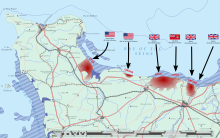
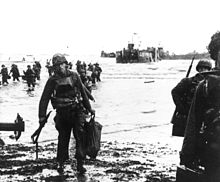
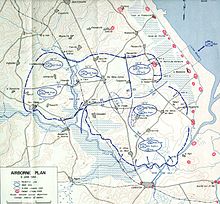
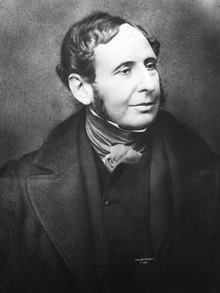
2 Comments
Harlan
If some one desires expert view on the topic of blogging afterward i advise him/her to
pay a quick visit this web site, Keep up the nice work.
Paul
Hi Harlan, thank you for the very kind words. Much appreciated indeed. 👍